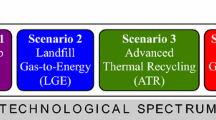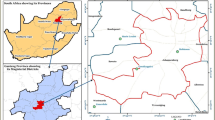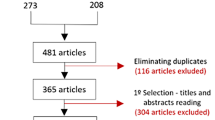Abstract
The German Waste Avoidance, Recovery and Disposal Act (KrW-/AbfG) creates the demand to select for “high quality” and “environmentally sound” waste treatment and disposal techniques. Waste disposers have to choose the most “high quality” and “environmentally sound” technique among different treatment and disposal options, and therefore must have a way to comparably evaluate the different techniques. Prognos developed an assessment method called HoVe to evaluate waste treatment and disposal facilities based on these new guidelines. It adheres to international standards of life cycle assessments (DIN/ ISO 14 040). The assessment is based on emission, material, energy and economic data which already exists, making it practical, time and cost efficient.
HoVe employs three Impact Categories (IC) to evaluate the impact of waste treatment. Each IC is characterized by Impact Clusters (ICL) to which original plant data are allocated. The ICL consider the amount and quality of produced products and residues from treatment processes, as well as the issues of ecological impact and energy balance. Further they incorporate economic aspects in order to assess the economic soundness of treatment and disposal plants, a requirement of the KrW-/AbfG. A pilot assessment of treatment options for shredder residues proves the viability of the method.
Similar content being viewed by others
References
Friege, H. (1995): Auf dem Weg zum Stoffrecht. Zeitschrift für Umweltrecht - ZUR 6 (5) 1995, pp. 241–248
Schröder, W.;Daschkeit, A. (1994): Ökosystemare Umweltbe-wertung-Thesen zum Anforderungsprofil künftiger Umweltfor-schung. UWSF-Z. Umweltchem. Ökotox. 6 (3) 1994, pp. 139–144
Society of Environmental Toxicology and Chemistry (SETAC) (1993): Guidelines for Life Cycle Assessments: “A code of practice”; SETAC Workshop held at Sesimbra, Portugal, March 31 to April 3, 1993
EN ISO 14 040 (1996): Environmental Management-Life Cycle Assessment - Principles and Framework; Draft Report from August 1996
Kiüppel, H.J. (1997): Goal and Scope Definition and Life Cycle Inventory Analysis. Int. J. LCA 2 (1) 1997, pp. 5–8
Böhler, A.;Kottmann, H. (1996): Ökobilanzen - Beurteilung von Bewertungsmethoden; UWSF -Z. Umweltchem. Ö;kotox. 8 (2) 1996, pp. 107–112
Umweltbundesamt (ed.) (1995): Methodik der produktbezogenen Ökobilanzen - Wirkungsbilanz und Bewertung. UBA Texte 23/95
BUWAL, Bundesamt für Umwelt, Wald und Landschaft (1996): Ökoinventare für Verpackungen. Bd. 1 und 2, BUWAL Schriftenreihe Umwelt Nr. 250
National Reuse of Waste Research Programme, NOH (1995): The Eco-Indicator ′95. Final Report, Pre Consultants, Amersfoort, NL
Kreibe, S.;Wagner, J.;Rommel, W. (1996): Verwertung und Beseitigung von Leiterplattenschrott. Bayerisches Institut für Abfallforschung (Hrsg.), BIfA-Texte Nr. 7
Prognos GmbH (1997a): HoVe - Bewertung von Entsorgungsver-fahren für Shredderleichtabfälle. Hand Out zur Präsentation beim Umweltministerium Rheinland-Pfalz am 24. Juli 1997
UNEP, United Nations Environment Programme - Industry and Environment, United Nations Publication (1996): Life Cycle Assessment: what it is and how to do it. Paris
Prognos GmbH (1997b): Vergleichende Untersuchung von Abfallentsorgungsverfahren für Shredderabfälle. Im Auftrag des Hessischen Ministeriums für Umwelt, Energie, Familie und Gesundheit; Wiesbaden
Joschek, H.-I.;Mross, W.D.;Fluck, J.;Korn, K.;Fouquet, G.;Janisch, G. (1996): Produkt oder Abfall? Die Gretchenfrage der Kreis-laufwirtschaft. Abfallwirtschaftsjournal 8 (9) 1996, pp. 60–64
Author information
Authors and Affiliations
Corresponding author
Rights and permissions
About this article
Cite this article
Seum, S. The hove assessment method: principal structure and pilot application. Int. J. LCA 3, 191–199 (1998). https://doi.org/10.1007/BF02977568
Received:
Accepted:
Issue Date:
DOI: https://doi.org/10.1007/BF02977568




